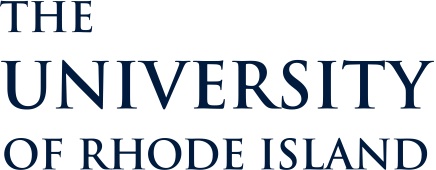Newswise — An international team of the world's leading scientists has just returned from the first ever scientific expedition to dive an amazing 4,500 metres deep into ocean water to explore the seabed site of the 2004 Asian Tsunami. They have revealed dramatic photographic evidence of seafloor ruptures that contributed to the deadly December 26 tsunami wave.
Since May 10, scientists have spent 17 days at sea exploring the seafloor off the coast of Sumatra in order to gain a better understanding of the forces that led to the devastating tsunami. Their results will help them to piece together the dramatic sequence of events of how the giant earthquake caused the tsunami. Using geophysical survey tools, operated by the Geological Survey of Canada, and a unique deep-water remotely-operated vehicle, operated by Oceaneering International Inc., the Sumatra Earthquake and Tsunami Offshore Survey (SEATOS) team's mission is the first time that marine scientists have been able to find and film such critical ruptures at such an incredible depth deep in the Indian ocean.
The project is being filmed exclusively for a BBC, Discovery and ProSieben documentary, by award-winning UK production company Darlow Smithson Productions, for broadcast later this year.
The mosaic of photographs the team has released today show a 3 metre high x 8 metre wide section of compacted sediment, only a small part of a huge cliff that was faulted and upthrust during the enormous earthquake and undoubtedly contributed to the creation of the tsunami wave.
Dr Don Fisher from Pennsylvania State University said: "The faults are absolutely fresh and it's mind-blowing that we were fortunate enough to find these faults nearly 3 miles down."
The faults, which were found on the outer edge of the continental shelf, provide important evidence for reconstructing the events of December 26. The observed seafloor fault surface is referred to by geologists as striated because it is smoothed by rocks moving against each other as the seafloor is ripped open. Leading the Census of Marine Life biologists, Professor Paul Tyler of the National Oceanography Centre, UK, was, "surprised to find absolutely no evidence of deep-sea animals at the site during a 14h dive with the ROV submersible. This is unprecedented in 25 years of sampling the deep sea."
"This discovery is a critical piece of the puzzle for reconstructing the December 26 tsunami wave," said Dave Tappin, Co-chief Scientist of the expedition from the British Geological Survey. Seafloor models that re-create the motions from the measured earthquake energy are crude in terms of their ability to pinpoint exact locations of fault movements at the seabed. The SEATOS expedition is specifically designed to explore the seafloor in search of direct evidence for the critical locations where the seabed moved and generated the giant wave.
The SEATOS team, comprises a group of 22-strong scientists from six countries, combining a variety of scientific disciplines, including tsunami wave model experts, geophysicists, biologists, seismologists, engineers, geologists, and visualization experts. This unique range of experts enabled a fully integrated approach to the expedition. Dr Kate Moran, Co-chief Scientist from the University of Rhode Island, explained that "we've gathered an experienced and diverse team of specialists for SEATOS because its one of the essential ingredients for this challenging goal to find evidence of the sources that created this most devastating of tsunamis."
The data from the expedition will take months to analyse, and the full implications of the results will also take some time to gauge, but the scientific team are all delighted with the mission's success and are confident that their findings will enable them a far greater and detailed understanding of the forces that led to the tsunami. The team will re-convene later this year to draw their conclusions after initial analysis has taken place.
David L Mearns, Director of Blue Water Recoveries Ltd UK, who conceived the expedition and is acting as Marine Coordinator says: "Everyone involved in the project is thrilled that we have made such a significant scientific discovery in the relatively short period of time we have been at sea. We had a good scientific plan and our share of good fortune but we owe a great deal to the UK Hydrographic Ship HMS Scott, which surveyed the area earlier this year and provided a roadmap of seabed features that allowed us to zero-in with our high-resolution cameras on the most likely fault areas."
The expedition is being filmed on location for " Journey To The Heart Of The Tsunami " by Darlow Smithson Productions. Directed by Ed Wardle with Julian Ware as the executive producer, it will be broadcast later this year on BBC ONE, Discovery US, ProSieben in Germany and Discovery International. Also supporting the expedition is the National Science Foundation's ARMADA Project (http://www.armadaproject.org/), the Alfred P. Sloan Foundation for the Census of Marine Life Program (http://www.coml.org/), Oceaneering Inc, BP Marine Limited and Science Application International Corporation (SAIC).
